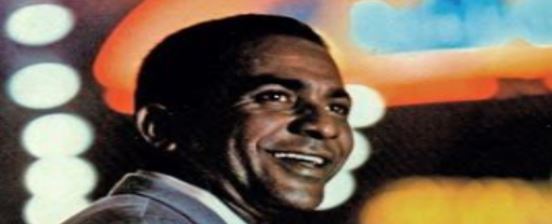In Part 2 of this series on the “filin” we’ll take a deeper look at Jose Antonio Mendez, one of three artists that helped popularize the “filin” genre.
To recap, on Part 1 of the “Bolero-Filin” blog series we discussed the origins of the this Latin music genre. We mentioned that it originated in the Cayo Hueso neighborhood in Havana, Cuba. Additionally, we discussed that it differs from the traditional “bolero” in that it is not as danceable. Finally, the Filin distinguishes its performers by each highlighting their own “feeling” or emotional brand.
We also covered the artists that developed the “filin” movement in Cuba. Part 1 also covered how it then spread to Mexico, New York, Puerto Rico, and other countries in Latin America.
Jose Antonio Mendez (1927-1989)
For his role as one of the early creators of the “filin”, Jose Antonio Mendez has a key part on this genre. Born in Havana, Cuba in 1927, he was a guitarist, singer, and song-writer. He won a 1940 version of a program like “American Idol” but at the time it was a radio program called “La Corte Suprema del Arte” (The Supreme Court of Art). It’s funny how we think this type of music reality shows was the creation of the Simon guy. The fact is they have been around for decades!

Jose Antonio Mendez wrote his first songs in 1946 when he was about 19 years old. It wasn’t much longer that the young artists of the time began to gather to “jam” with their guitars. Mendez thought that the “filin” meant not only a special “feeling” to be uniquely expressed by singers and song-writers, but that it also denoted a condition of the times they lived in.
You may have a course voice for a singer, but if you could send a message the audience liked, you had “filin”. So the term “filin” came to mean all the good, the modern, the spontaneous that can win over the habitual.
It was still 1946 when Jose Antonio Mendez decided to form his 1st group. This group had a young Cuban singer named Omara Portuondo, and a talented piano player named Frank Emilio. Besides Jose Antonio; Omara and Frank also would go on to become big influencers of the “filin” movement.
Jose Antonio Mendez in Mexico
In 1949 Jose Antonio Mendez went to Mexico to launch his career in that country. There he worked with the likes of Agustin Lara among others. He recorded five albums during his work in Mexico. In 1959 her returned to Cuba after the victory by Castro’s revolution. He continued performing in Cuba and Mexico until dying in a car accident after a performance in the “Festival del Bolero” in 1989.
A curious fact for Salsa music fans is that his last performance in Mexico was with Cuban band “Son 14” then led by the great singer Adalberto Alvarez.
Below is a short video of Jose Antonio Mendez singing “La Gloria Eres Tu”. You will recognize this as one of the classic boleros of Latin music. However, check how the author inflicts the “filin” to the song.
Some of his most famous songs include “Novia Mia”, “Me Faltabas Tu” (who was popularized by Elena Burke, and again later by Vicentico Valdez), “Soy Tan Feliz”, “Cuando lo Pienses Bien”, and “Quiereme y Veras”. Jose Antonio also wrote “Decidete”, which is also known by Salsa fans as “Dejala Que Siga Andando”. This song was popularized by Vicentico Valdes with the Sonora Matancera. Tito Gomez, the great Cuban singer (not the Puerto Rican of the same name) also popularized it. Finally, Salsa legend Hector Lavoe popularized it in his album “Revento”.
Jose Antonio Mendez was perhaps the leading driver of the “filin” movement. He helped established it as a Latin music genre that has influenced so many artists and is still practiced today.
“Bolero-Filin” Part 3 Preview
In Part 3 of this series on the “Bolero-Filin” I’ll cover a Cuban musician that made a big impact not only in the “Filin” movement, but also in Afro-Cuban Jazz. He also was distinguished for being one of the first pianist to play with “Son” conjuntos, even when he was still a young boy in shorts.


[…] boleros, son, danzón, and even haupango. The song selection, from songwriters like José Antonio Mendez and Agustín Lara, is […]
[…] 1946 Emilio became a founding member of the Loquibambia Swing band with friend Jose Antonio Mendez. Loquibambia featured a young Omara Portuondo as […]